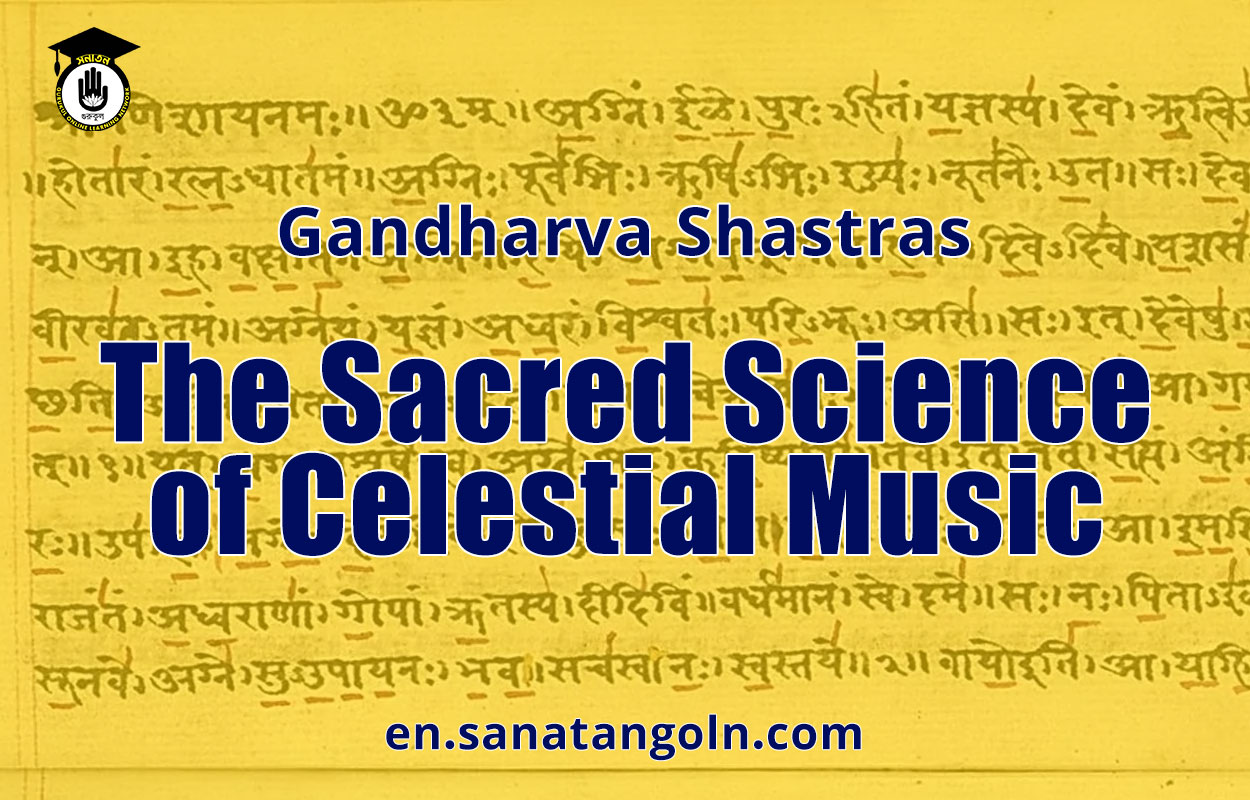Gandharva Shastras, often referred to as the divine scriptures of music, offer a profound look into the ancient Indian science of music. Drawing its name from Gandharvas, the celestial beings in Hindu mythology known for their music and singing, these Shastras delve into the intricate details of musical notes, scales, and rhythms and their effect on the mind and soul.
Origins of Gandharva Shastras
The earliest references to Gandharva music can be found in the ancient scriptures, including the Vedas and Puranas. The Rigveda mentions Gandharva as both a deity and a celestial class of beings. The art form gets its name from these celestial musicians who were believed to possess the ability to bring harmony and balance to the universe with their music.
Core Principles of Gandharva Shastras
- Nada Brahman: This principle emphasizes that sound or Nada is the universal cosmic energy. It is believed that the universe began with sound, and music is a path to connect with that divine energy.
- Swara and Shruti: The Gandharva Shastras emphasize the importance of Swara (musical note) and Shruti (the smallest interval of sound). These are fundamental to Indian classical music, where precision in hitting the right note and maintaining the right pitch is of utmost importance.
- Rasa Theory: The Rasa theory discusses the essence or mood of a musical composition. It elucidates how different combinations of notes can evoke specific emotions in the listener, linking it to the nine principal rasas or sentiments in Indian aesthetics.
The Seven Swaras
The Gandharva Shastras outline the Sapta Swara or the seven notes that form the foundation of Indian music. They are:
- Shadja (Sa)
- Rishabh (Re or Ri)
- Gandhara (Ga)
- Madhyam (Ma)
- Pancham (Pa)
- Dhaivat (Dha)
- Nishad (Ni)
Each swara has its unique character and can evoke distinct emotions when played or sung. They are similar to the Western Do-Re-Mi but have nuances that are unique to Indian classical music.
The Two Traditions: North and South
While the basic principles remain the same, the Gandharva Shastras have given rise to two major traditions in Indian classical music:
- Hindustani (North Indian) Tradition: This tradition has evolved with Persian and Islamic influences and is prevalent in Northern India. It has its unique set of Ragas (melodic frameworks) and Taals (rhythmic cycles).
- Carnatic (South Indian) Tradition: This tradition remains more traditional and closer to the ancient scriptures, prevalent in Southern India. It has a rich set of Ragas and Talas, many of which differ from the Hindustani system.
Musical Instruments and Gandharva Shastras
The Gandharva Shastras also mention various musical instruments, many of which continue to be integral to Indian classical music. The Veena, a string instrument, is often associated with Goddess Saraswati, the deity of learning and arts. Other instruments like the Mridangam (a percussion instrument), Flute, and Tabla have been essential in the practice of Gandharva music.
Significance of Time and Season
Another unique aspect of the Gandharva Shastras is the emphasis on the time of day or season for performing certain Ragas. Certain Ragas are meant to be performed at specific times, like dawn or dusk, and some are associated with particular seasons, like monsoon. This temporal connection is believed to maximize the Rasa or emotion that the Raga can evoke.
Gandharva Shastras and Spirituality
The spiritual significance of Gandharva music is paramount. Music, as defined in these scriptures, is not just an art form but a path to enlightenment. The precision, discipline, and devotion required in practicing this form of music are likened to yoga. In fact, Nada Yoga, the yoga of sound, has its roots in the principles laid out in the Gandharva Shastras.
Influence on Dance and Theatre
The principles of Gandharva Shastras are not limited to music. Indian classical dance forms like Bharatanatyam, Kathak, and Odissi have been deeply influenced by these principles. The Shastras lay out the guidelines for musical accompaniment, rhythms, and even the emotions portrayed in classical dances.
Modern Relevance of Gandharva Shastras
In today’s fast-paced world, the ancient wisdom of the Gandharva Shastras offers a refuge for the soul. While traditional Indian classical music remains popular, many contemporary artists and genres draw inspiration from these principles, adapting them to modern tastes.
Music therapy, an emerging field, also borrows from the Gandharva Shastras. The idea that specific notes or scales can have a healing effect on the mind and body is now being explored scientifically, proving that ancient wisdom often holds timeless truths.
Conclusion
The Gandharva Shastras provide a comprehensive understanding of the science and spirituality of music, unique to the Indian subcontinent. This ancient wisdom, deeply rooted in spirituality, emphasizes not just the technical aspects but also the emotional and soulful connection that music can offer. The continued relevance and influence of these Shastras in various forms of art and therapy prove that the timeless truths they hold continue to resonate with humanity, transcending time and space.
